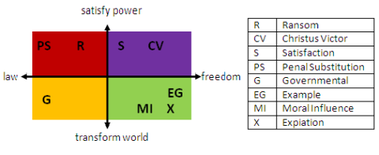|
The text this week is Mark 12:1-12 I often start my online meandering of a text by looking for some graphic assistance, something to get my creativity flowing. This time I googled "don't kill the messenger." My music director and I were discussing the parable and his first thoughts were, "I don't think I get it." For starters, parables aren't supposed to be simple. And thinking metaphorically is not always easy. As a Presbyterian pastor, I have more people who uses their intellect more than intuition. They like concrete thinking that uses their senses and not their feelings. So parables can seem simplistic and then sometimes downright horrible. In fact, that's the next thing my music director said, "they seem horrible." Yes, the people who were leasing the land from the landowner are horrible people. It's something we would see from the Soprano's or Shameless.  I don't want to assume people understand parables, nor do I want to assume people don't. However, a little explanation in three different areas would be helpful. The Story: The farmers have been entrusted with the land to work it and produce fruit. After the allotted time, which may have been as long as three years for the land to develop and mature in its growing capacity, the owner comes back for some rent, a portion owed him. But he doesn't come back himself. He sent slaves, one after the other, each killed on the job. Finally, the owner still doesn't come back himself. Instead he sends his son.  Here's where the story gets truly insane. The owner thinks the farmers are going to treat his son differently than the slaves. It's a huge risk on the owner's part. And one poorly taken if we're honest. Unless his son is as expendable as the slaves. Allegory: Each piece in an allegory has meaning. vineyard = Israel fence= wine press= wine tower= owner=God farmers = leaders, scribes of the people share of produce= slave #1= slave #2= other slaves= son=Jesus  Moral Meaning: At this point, Jesus has predicted his death three times. This parable seems to be suggesting the reason why Jesus would die. He was coming to collect what was due to God. And like those who had gone before him, the slaves who worked for God, he too would be killed "on duty." Just like a note about basic allegory may be helpful, a little primer on "why Jesus had to die?" may also come in handy. Here's a website that seemed particularly user friendly. One thing I really enjoy about the Narrative Lectionary is that we start talking about the cross before Holy Week. Too often, when left to the high holy days of Maundy Thursday or Good Friday, theories about Jesus' death are lost in the need to reenact our faith stories. One more graphic that may be helpful giving a primer on "why Jesus had to die?" is here, a grid defined by satisfying power and transforming world by law and freedom. I'm going to spend a little time working up a one sentence definition for each of the theories mentioned in the grid. However, without explaining the various theories, I wonder where people would put their own "x" if asked what relationship Jesus' death had to the four areas on this graphic: satisfying power, transforming world, law and freedom. I wonder if our answers would reveal what kind of savior we want/need.
1 Comment
1/15/2024 09:50:45 am
I wanted to express my gratitude for your insightful and engaging article. Your writing is clear and easy to follow, and I appreciated the way you presented your ideas in a thoughtful and organized manner. Your analysis was both thought-provoking and well-researched, and I enjoyed the real-life examples you used to illustrate your points. Your article has provided me with a fresh perspective on the subject matter and has inspired me to think more deeply about this topic.
Reply
Leave a Reply. |
Search this blog for a specific text or story:
I am grateful for
|

This work is licensed under a Creative Commons Attribution-NonCommercial-ShareAlike 3.0 Unported License.

